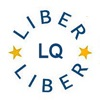CrossRef and DOIs: New Developments
DOI:
https://doi.org/10.18352/lq.7753Abstract
Profound changes to scholarly communications have been taking place since the advent of the World Wide Web and changes are continuing. Publishers and librarians are facing a new generation of students, researchers and scientists. The Pew Internet and American Life Project The Internet goes to College (Jones, 2002)found that 73% of students use the Internet more than the library for information searching. The Survey also revealed a danger for publishers of scholarly journals - that of losing readers. To quote from the survey: “Many students are likely to use information found on search engines and various Web sites as research material ... and faculty often report concerns about the number of URLs included in research paper bibliographies and the decrease in citations from traditional scholarly sources.” In order to counter these trends, publishers and librarians must work together to make it easy for users to access authoritative scholarly sources online. This can be difficult to do since users' expectations of online journals have increased dramatically over the last 8 years and continue to increase. For most users these days content must be online and it must be linked. If it's not linked, it doesn't exist. Linking on the web works very well in conjunction with traditional references in journals. The practice of citing other articles has been around since the first journals appeared in the 17th century and it's a crucial part of the scientific process. So naturally, with online journals there is immense value in users being able to go to a cited item with one or two clicks. Another important trend is the development of the article economy - journal issues are becoming less important. Most publishers now post articles online, “ahead of print”, without volume, issue and page number, and for many journals the e-article is the article “of record”. Because of this trend and the need for reference links, uniquely identifying each article, creating standardized metadata and creating a system to link references are of critical importance for publishers.Downloads
Download data is not yet available.

Published
2003-12-16
Issue
Section
Articles
License
Copyright (c) 2003 Ed Pentz

This work is licensed under a Creative Commons Attribution 4.0 International License.
How to Cite
Pentz, E. (2003). CrossRef and DOIs: New Developments. LIBER Quarterly: The Journal of the Association of European Research Libraries, 14(1). https://doi.org/10.18352/lq.7753





